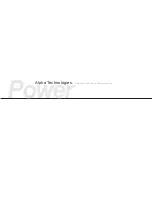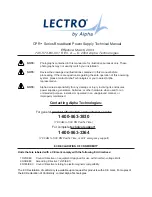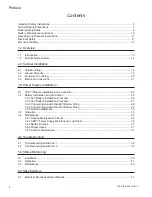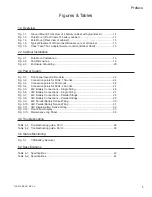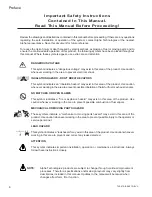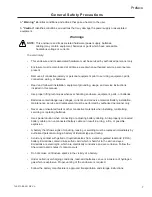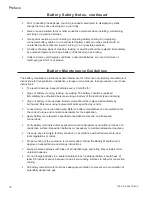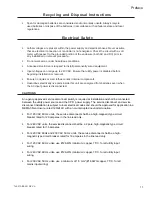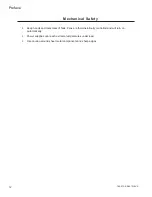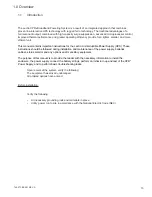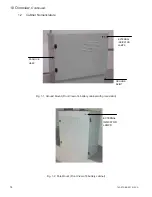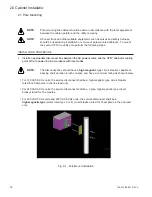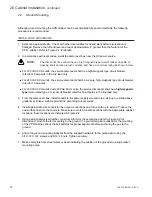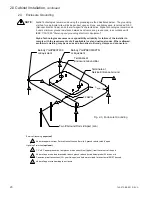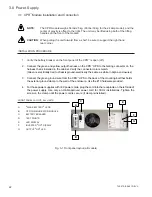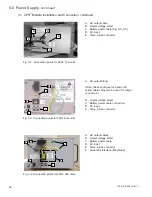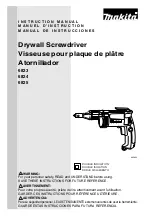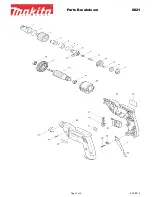
9
Preface
745-573-B0-001 REV. A
Lead-acid batteries contain dangerous voltages, currents and corrosive material. Battery installation,
maintenance, service and replacement must be performed by authorized personnel only.
Chemical Hazards
NOTE:
Any gelled or liquid emissions from a valve-regulated lead-acid (VRLA) battery
contain dilute sulfuric acid, which is harmful to the skin and eyes.
Emissions are electrolytic, which are electrically conductive and corrosive.
To avoid injury:
•
Servicing and connection of batteries shall be performed by, or under the direct supervision
of, personnel knowledgeable of batteries and the required safety precautions.
•
Always wear eye protection, rubber gloves, and a protective vest when working near
batteries. Remove all metallic objects from hands and neck.
•
Batteries produce explosive gases. Keep all open flames and sparks away from batteries.
•
Use tools with insulated handles, do not rest any tools on top of batteries.
•
Batteries contain or emit chemicals known to the State of California to cause cancer and
birth defects or other reproductive harm. Battery post terminals and related accessories
contain lead and lead compounds. Wash hands after handling. (California Proposition 65)
•
Wear protective clothing (insulated gloves, eye protection, etc.) whenever installing,
maintaining, servicing, or replacing batteries.
•
If any battery emission contacts the skin, wash immediately and thoroughly with water.
Follow your company’s approved chemical exposure procedures.
•
If any battery emission contacts the eye, wash immediately and thoroughly with water for 10
minutes with pure water or a special neutralizing eye wash solution and seek immediate
medical attention. Follow your company’s approved chemical exposure procedures.
•
Neutralize any spilled battery emission with the special solution contained in an approved
spill kit or with a solution of 1 lb. Bicarbonate of soda to 1 gallon of water. Report chemical
spill using your company’s spill reporting structure and seek medical attention if necessary.
•
Always replace batteries with those of an identical type and rating. Never install old or
untested batteries.
•
Do not charge batteries in a sealed container. Each individual battery should have at least
0.5 inches of space between it and all surrounding surfaces to allow for convection cooling.
•
All battery compartments must have adequate ventilation to prevent an accumulation of
potentially dangerous gas.
Battery Safety Notes


